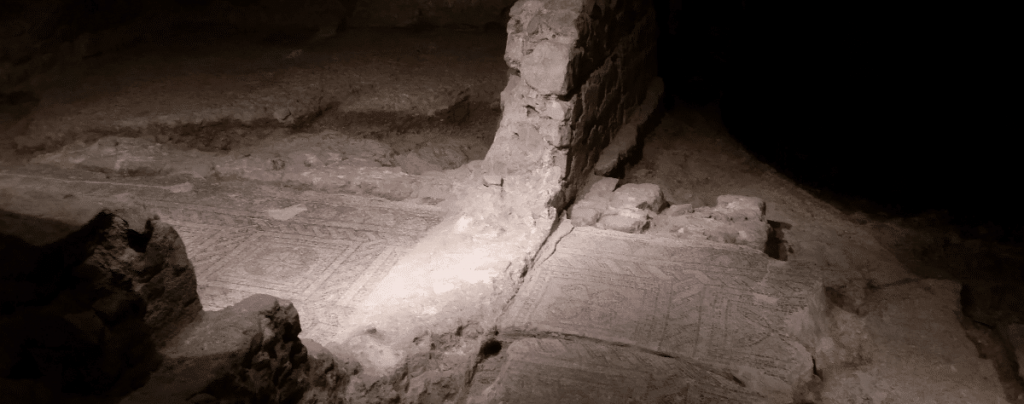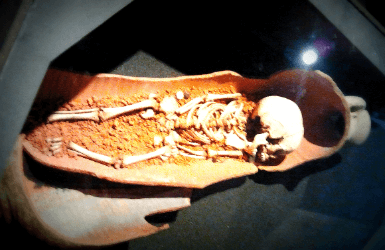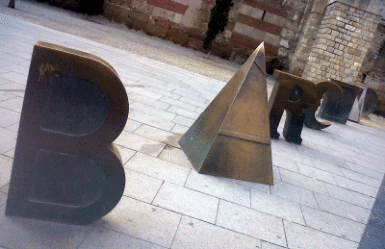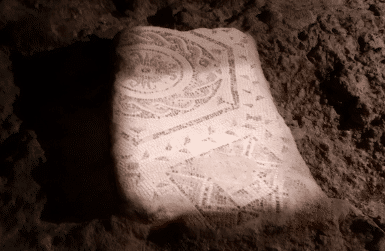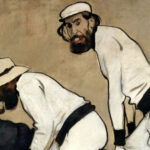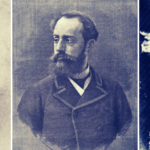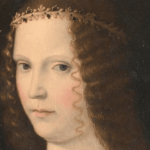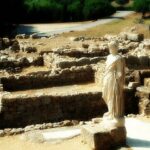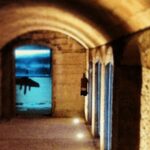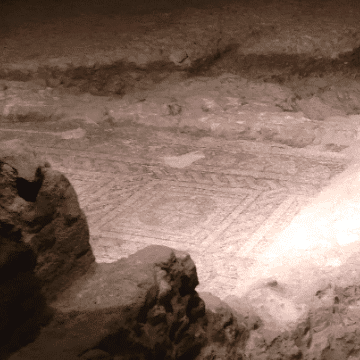
The Barcelona Roman Ruins
WHAT'S LEFT FROM THE ROMAN IN BARCELONA?
2000 years ago, the Romans arrived to our land and founded what was going to become the city of Barcelona. They interacted with the local Iberian tribes, but those were nomad and hadn’t created a city of their own. Or at least it hasn’t been found yet. The Roman city of Barcino was small: it could be crossed in five minutes walk. But it was well equipped with sewers, fountains and wells that got water from two aqueducts, public baths, defense walls…
It wasn’t an important city, though: the Capital was further South. Tarraco, nowadays Tarragona, bloomed at about a day walk from Barcino. They had an anphitheater, a luxurious provintial forum, a large circus… All of them are considered UNESCO sites, now that roles have changed and Tarragona has become a smaller town and Barcelona is the capital city.
The Barcelona Roman ruins aren’t that spectacular, and they are often sort of hard to find. But they still speak of long forgotten history and visiting them feels like having found a hidden gem. If you are a history geek, today we share with you the Roman sites you shouldn’t miss in Barcelona.
These are the top sites of the Roman City of Barcino:
1
Roman Necropolis
The Romans were conscious of the importance of hygiene for health. That was the reason why their dead were buried outside of the cities. The cemeteries were often located along the roads. Travelers would think about the people lying there as they passed their graves, and in a way, they would never be forgotten.
You’ll find the Roman necropolis near the top of La Rambla. There’s an Interpretation Center where you’ll be able to learn more about the Roman death rituals and who was buried there. This is my favorite place to start a walk around the Roman ruins of Barcelona. It makes me feel like I’m a traveler myself arriving to the city.
2
Barcelona Roman Wall
The Roman Walls of Barcino are the largest monument you’ll find in town. Still quite well preserved, their structure was eventually incorporated to medieval buildings. Their oval shape can still be traced looking over the current map of the Old Town. Starting from Plaça Nova in front of the Cathedral, it’ll be easy for you to spot the Northern entrance to the city.
You’ll recognize it for the two towers that flanked it, now one of them part of the Palace of the Bishop and the other of the Arcadiaca house. An arch to the left reminds us of the two aqueducts that entered the city at this precise point. A metal sculpture by the artist Joan Brossa reads the letters of the word “Barcino”.
Here starts your walk around the roman walls. To the right, on Palla street a nice chunk is visible at the end of a school yard. And as you continue through Banys Nous several shops feature part of the walls inside their venue. Having a hot chocolate seating by a Roman wall in La Granja or buying shoes at Obach, for instance. The Avinyó st. section is maybe the least evident, but it’s a local secret that inside a restaurant on the number 19 there’s a nice section of it, too. Comtessa de Sobradiel street will be a shortcut to Plaça Regomir.
Inside the Pati Llimona community center you’ll see one of the two pedestrian entrances of the Southern gate. Next door, the Chapel of Saint Christopher was build inside one of the towers that flanked the gate. And next door you can access the remains of the public Roman baths where visitors washed themselves before entering the city. Go down the street just a bit more and take the left: on Correu Vell st there’s a side alley that takes you to the public patio of a seniors club. From there you can also appreciate a large and tall piece of the Roman wall and some Roman towers.
At the end of the street there’s Plaça dels Traginers, where continues to stand another defense tower with a decadent feel. You’ll only have to trace Lloc-Tinent Navarro up the street to continue seeing pieces of the wall here and there. It’ll eventually take you back to your starting point.
3
Roman Baths
As I mentioned before, there were some public baths next to the Southern gate of Barcino. It was the most important entrance to the city, since it was closer to the port (in those times, the sea was closer that now). Can you imagine how stinky you’d be after days at sea on a galley? That was a good reason to force travelers to wash before accessing the city!
Locals used them too, with different schedules for men and women. The proximity of the sea would have allowed them to have pools with sea water besides fresh water. Unfortunately, from what seems to have been a large facility, only the cold water pool (frigidarium) and some rooms are left.
4
Roman Temple
The highest point of the Roman city of Barcino was the Mount Taber. Not really that high: only 16.9m tall (55.5 feet), but relevant enough for the Romans to build their main temple there. Nowadays you barely notice you are going uphill when you take Paradise street from the back of the Cathedral.
It’s not easy to find, either. It’s located inside the courtyard of the headquarters of the oldest hiking club in Catalunya. The gate is usually open for people to check it out. The Roman temple was dedicated to the Emperor Augustus, even if they worshiped Jupiter there.
The Temple was in one end of the Roman Forum. It was the largest plaza, where the main streets crossed: the Cardus and the Decumanus. Both can still be easily guessed by looking at a map. Let me give you a clue: Plaça Sant Jaume is all that’s left of the Forum…
5
Roman Domus
Domus is the word for “house” in Latin. Two of them have been excavated and are open to the public. You’ll find one of them in Avinyo street, and it’s remarkable for its ancient frescoes.
The other is in the Sant Honorat street in the Call, the medieval Jewish Section. There Roman remains and mosaics mix up with medieval silos. So you’ll need some concentration to tell apart what element belongs to what period of time. Both sites open only at very specific times: make sure to check out their opening schedules if you want to visit.
AND BONUS! Where to see the largest Roman archaeological site in Barcelona?
6
Barcelona Roman Ruins Museum
MUHBA stands for Museum of History of Barcelona. Despite being in the Medieval Royal Palace, the majority of the visit takes place in the basement, where hides a fabulous Roman excavation. Be prepared for a couple of hours of archeology immersion. You’ll see ruins that aren’t too common to see: laundry facilities, food-processing industries, a winery…
You’ll walk around their alleys, still paved with stone, with their wells and sewers, and shops with mosaic pavements. And as the Romans become Christian after Emperor Constantinus, churches and a baptistery occupying the space of other services.
By the way, archaeology lovers will want to visit also the Archaeology Museum in Montjuic. There you’ll learn not only about the Romans, but also about the Iberians and the Greek. You might want to consider getting the Arqueotiquet to save on entrance fees.
What Barcelona Roman Ruins do you plan to visit?
Marta
MORE BARCELONA TIPS FOR YOU:
SHARE WITH YOUR TRAVEL MATES
RESEARCHING FOR A TRIP IS TIME-CONSUMING…
Need more inspiration?
Our 100% FREE Barcelona Collection will give you everything you need to organize the trip of your lifetime to Barcelona.
BEST INSIDER TIPS FROM THE PROS!


